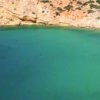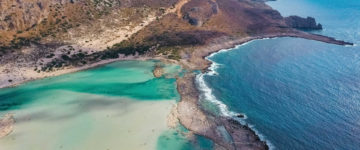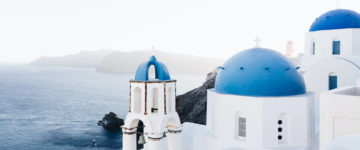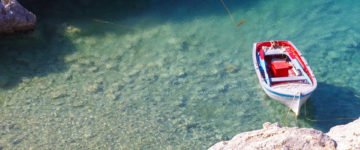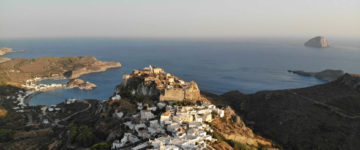
Astypalea at the fringes of the archipelago offer architecture and landscapes more reminiscent of the Cyclades group. Geographically, historically and architecturally, Astypalea really belongs to the Cyclades group of islands in Greece, on a clear day you can see Anafi or Amorgos far more easily than any of the other Dodecanese.
Despite an evocative butterfly shape, Astypalea may not immediately strike you as especially beautiful. Many beaches along the bleak, heavily indented coastline have reef underfoot and periodic dumpings of seaweed. Windswept heights are covered in thornbush or dwarf juniper, yet the sage, brewed as a tea, flourishes too. Hundreds of sheep and goats manage to survive which is supposely source of the excellent local cheese. Citrus groves and vegetable patches in the valleys signal a relative abundance of water, hoarded in a reservoir. Besides cheese, Astypalea is renowned for its honey, fish and lobster.
Most arrivals are Athenians, French or Italians, supplemented by large numbers of yachties and foreign second-home owners in picturesque Hora. When the only sound to break your thoughts is the solitary coo of a wood pigeon, you know you’ve discovered a place under the tourist radar. Swathed in silk aquamarine waters, far-flung, butterflyshaped Astypalea is richly rewarding for walkers, campers and history buffs. An island hunter’s ultimate escape, think mountainous meadows straight from the pages of Homer, and rugged beaches fringed in gas-blue turquoise.
In Astypalea there is a fair chance of sighting a mermaid. The main settlement is hilltop Hora, which cascades amphitheatrically down to the fishing port of Skala in a tumble of Persil-white houses. Windblown and remote, there’s an undeveloped tourist infrastructure here, and the most of visitors are Greek, the remainder being French and Italian. Fed up with the package crowd and fish and chips. Astypalea is the right place.
Astypalea is part of the Kalymnos regional unit and located about 30 miles southeast of Amorgos, 45 miles east of Santorini and about 40 miles west of Tilos and Kos.


